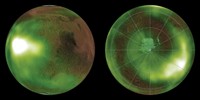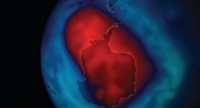Advertisement
Grab your lab coat. Let's get started
Welcome!
Welcome!
Create an account below to get 6 C&EN articles per month, receive newsletters and more - all free.
It seems this is your first time logging in online. Please enter the following information to continue.
As an ACS member you automatically get access to this site. All we need is few more details to create your reading experience.
Not you? Sign in with a different account.
Not you? Sign in with a different account.
ERROR 1
ERROR 1
ERROR 2
ERROR 2
ERROR 2
ERROR 2
ERROR 2
Password and Confirm password must match.
If you have an ACS member number, please enter it here so we can link this account to your membership. (optional)
ERROR 2
ACS values your privacy. By submitting your information, you are gaining access to C&EN and subscribing to our weekly newsletter. We use the information you provide to make your reading experience better, and we will never sell your data to third party members.
Environment
CO2 emissions affect thermosphere
December 18, 2006
| A version of this story appeared in
Volume 84, Issue 51
Carbon dioxide from fossil-fuel burning is expected to cause an additional 3% reduction in the density of Earth's outermost atmosphere by 2017, according to a team of scientists from the National Center for Atmospheric Research (NCAR) and Pennsylvania State University (Geophys. Res. Lett. 2006, 33, L23705). "We're seeing climate change manifest itself in the upper as well as lower atmosphere," notes coauthor Stanley C. Solomon, an atmospheric scientist at NCAR. Recent observations made by tracking satellites that orbit about 300 miles above Earth's surface show that the density of the thermosphere-a layer 60 to 400 miles above the surface-is declining. Although CO2 warms the lower atmosphere, it has the opposite effect in the much less dense thermosphere. There, each time a CO2 molecule collides with atomic oxygen, it radiates energy to space. These events cool the thermosphere, allowing it to contract and reducing its density at any given altitude, Solomon says. Between 1970 and 2000, the density of the thermosphere declined 5%.




Join the conversation
Contact the reporter
Submit a Letter to the Editor for publication
Engage with us on Twitter